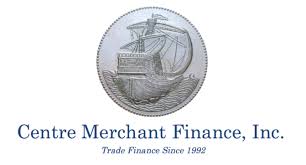Do you want BuboFlash to help you learning these things? Or do you want to add or correct something? Click here to log in or create user.
#has-images #paracaidas-session #reading-chris-schoening


Readers will be introduced to the definition of credit risk, the interpretation of credit ratings, the four Cs of traditional credit analysis, and key financial measures and ratios used in credit analysis. The reading explains, among other things, how to compare bond issuer creditworthiness within a given industry as well as across industries and how credit risk is priced in the bond market.
If you want to change selection, open original toplevel document below and click on "Move attachment"
This reading covers basic principles of credit analysis, which may be broadly defined as the process by which credit risk is evaluated. Readers will be introduced to the definition of credit risk, the interpretation of credit ratings, the four Cs of traditional credit analysis , and key financial measures and ratios used in credit analysis. The reading explains, among other things, how to compare bond issuer creditworthiness within a given industry as well as across industries and how credit risk is priced in the bond market.
With bonds outstanding worth many trillions of US dollars, the debt markets play a critical role in the global economy. Companies and governments raise capital in the debt market to fund current operations; buy equipment; build factories, roads, bridges, airports, and hospitals; acquire assets, and so on. By channeling savings into productive investments, the debt markets facilitate economic growth. Credit analysis has a crucial function in the debt capital markets—efficiently allocating capital by properly assessing credit risk, pricing it accordingly, and repricing it as risks change. How do fixed-income investors determine the riskiness of that debt, and how do they decide what they need to earn as compensation for that risk? This reading covers basic principles of credit analysis, which may be broadly defined as the process by which credit risk is evaluated. Readers will be introduced to the definition of credit risk, the interpretation of credit ratings, the four Cs of traditional credit analysis, and key financial measures and ratios used in credit analysis. The reading explains, among other things, how to compare bond issuer creditworthiness within a given industry as well as across industries and how credit risk is priced in the bond market. The reading focuses primarily on analysis of corporate debt; however, credit analysis of sovereign and non-sovereign, particularly municipal, government bonds will also be addressed. Structured finance, a segment of the debt markets that includes securities backed by pools of assets, such as residential and commercial mortgages as well as other consumer loans, will not be covered here. The key components of credit risk—default probability and loss severity—are introduced in the next section along with such credit-related risks as spread risk, credit migra
Parent (intermediate) annotation
Open itThis reading covers basic principles of credit analysis, which may be broadly defined as the process by which credit risk is evaluated. Readers will be introduced to the definition of credit risk, the interpretation of credit ratings, the four Cs of traditional credit analysis , and key financial measures and ratios used in credit analysis. The reading explains, among other things, how to compare bond issuer creditworthiness within a given industry as well as across industries and how credit risk is priced in the bond market.
Original toplevel document
Reading 55 Fundamentals of Credit Analysis (Intro)With bonds outstanding worth many trillions of US dollars, the debt markets play a critical role in the global economy. Companies and governments raise capital in the debt market to fund current operations; buy equipment; build factories, roads, bridges, airports, and hospitals; acquire assets, and so on. By channeling savings into productive investments, the debt markets facilitate economic growth. Credit analysis has a crucial function in the debt capital markets—efficiently allocating capital by properly assessing credit risk, pricing it accordingly, and repricing it as risks change. How do fixed-income investors determine the riskiness of that debt, and how do they decide what they need to earn as compensation for that risk? This reading covers basic principles of credit analysis, which may be broadly defined as the process by which credit risk is evaluated. Readers will be introduced to the definition of credit risk, the interpretation of credit ratings, the four Cs of traditional credit analysis, and key financial measures and ratios used in credit analysis. The reading explains, among other things, how to compare bond issuer creditworthiness within a given industry as well as across industries and how credit risk is priced in the bond market. The reading focuses primarily on analysis of corporate debt; however, credit analysis of sovereign and non-sovereign, particularly municipal, government bonds will also be addressed. Structured finance, a segment of the debt markets that includes securities backed by pools of assets, such as residential and commercial mortgages as well as other consumer loans, will not be covered here. The key components of credit risk—default probability and loss severity—are introduced in the next section along with such credit-related risks as spread risk, credit migra
Summary
| status | not read | reprioritisations | ||
|---|---|---|---|---|
| last reprioritisation on | suggested re-reading day | |||
| started reading on | finished reading on |
Details
Discussion
Do you want to join discussion? Click here to log in or create user.